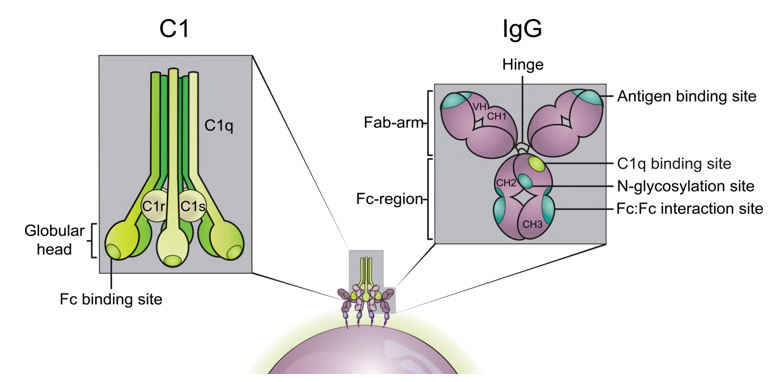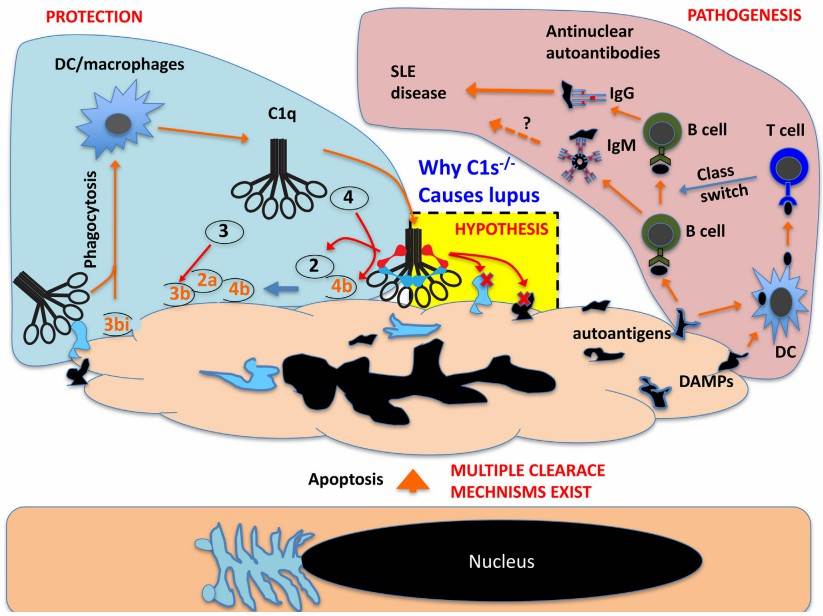NAA Services for Anti-C1q
Complement component 1q (C1q) is one important protein involved in the complement system, which shows a close association with autoimmunity and autoimmune diseases. As a pioneer and global leader in antibody discovery and related services, Creative Biolabs offers a full range of anti-C1q marker services for diseases diagnosis and therapeutic monitoring to benefit the domestic and international customers.
Background of Anti-C1q
C1q is one of the subunits of the C1 complex involved in the classical pathway of the complement system. C1q is also an important protein in the innate immune system as it mainly functions in the apoptotic cell and immune complex removal. C1q can recognize and bind to antigen-antibody complexes and subsequently activate the C1 complex. The activated C1 complex then initiates the classical pathway of the complement system. C1q also regulates numerous cellular processes, such as a series of phagocytosis, chemotaxis, and procoagulant activities through directly binding to a number of cellular receptors on lymphocytes, fibroblasts, and other cell surfaces. A wide range of critical functions determines abnormity or deficiency of C1q is associated with pathogenic processes. Anti-C1q is a kind of autoantibody that directly reacts with C1q subunits, which is associated with autoimmune diseases.
 Fig.1 Schematic representation of human IgG (top right), human C1q (top left), and illustration of IgG hexamerization after antigen binding to cells, generating an optimal docking site for C1q (bottom). (Melis, 2015)
Fig.1 Schematic representation of human IgG (top right), human C1q (top left), and illustration of IgG hexamerization after antigen binding to cells, generating an optimal docking site for C1q (bottom). (Melis, 2015)
The Role of Anti-C1q in Systemic Lupus Erythematosus
Autoimmune diseases are mostly caused by autoantibodies induced by an inefficient clearance of apoptotic cells and cellular debris, which abnormally serve as a source of autoantigens attack body-self. Systemic lupus erythematosus (SLE) is an autoimmune multisystem disease which is characterized by multiple autoantibodies and complement activation. It has been demonstrated that C1q deficiency is associated with SLE and glomerulonephritis, which probably resulted from impaired immune complexes and apoptotic cell clearance. Moreover, abnormity of C1q is a more likely genetic risk factor than C3 and C4 for SLE even though this deficiency is very rare.
Autoantibodies against C1q (Anti-C1q) were first reported in 1984 detected from the serum of SLE patients. Actually, anti-C1q autoantibodies can be isolated in the sera of patients with autoimmune diseases as well as in healthy individuals. But the levels of C1q and anti-C1q autoantibodies in serum are generally decreased and elevated in SLE patients, respectively. It has been proposed that circulating anti-C1q autoantibody is able to serve as a useful biomarker for SLE.
 Fig.2 The C1q involvement in SLE.2
Fig.2 The C1q involvement in SLE.2
What We Can Do about NAA?
Natural autoantibodies are antibodies that react with self-molecules occurred in healthy individuals with a wide range of applications. There are thousands of autoantibodies involved in diseases, of which anti-C1q is one of the NAA we have researched. In addition to NAA products, Creative Biolabs also can provide comprehensive NAA services, including but not limited to:
Just feel free to contact us for more information. We are pleased to use our extensive experience and advanced platform to offer the best service and the most qualified products to satisfy each demand from our customers.
References:
- Melis, Joost PM, et al. "Complement in therapy and disease: regulating the complement system with antibody-based therapeutics." Molecular immunology 67.2 (2015): 117-130.
- Lu, Jinhua, and Uday Kishore. "C1 complex: an adaptable proteolytic module for complement and non-complement functions." Frontiers in immunology 8 (2017): 592.
Related Services:
- NAA Services for Anti-Nuclear Antibody (ANA)
- NAA Services for Anti-Double-Stranded DNA (dsDNA)
- NAA Services for Anti-Smith
- NAA Services for Anti-Ribonucleoprotein (RNP)
- NAA Services for Anti-Ro Autoantibodies
- NAA Services for Anti-La Autoantibodies
- NAA Services for Rheumatoid Factor (RF)
- NAA Services for Anti-C3
- NAA Services for Anti-C4

